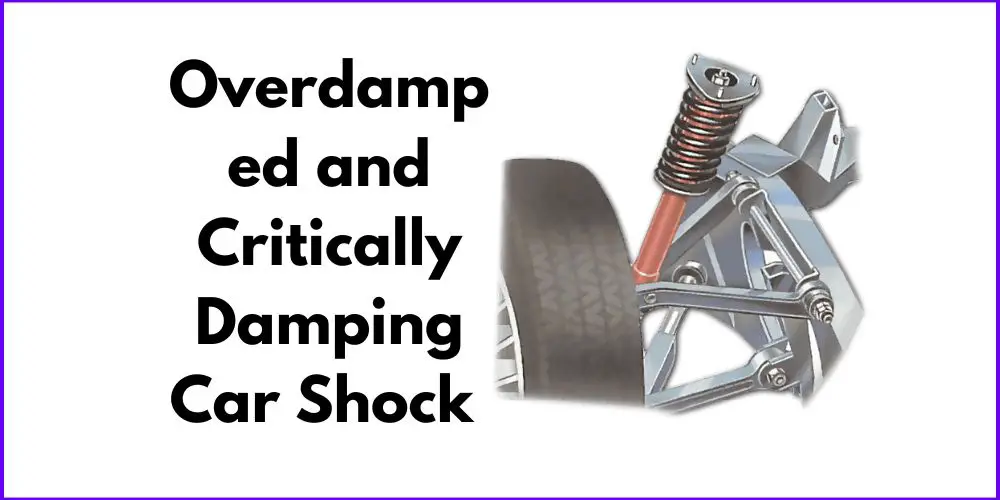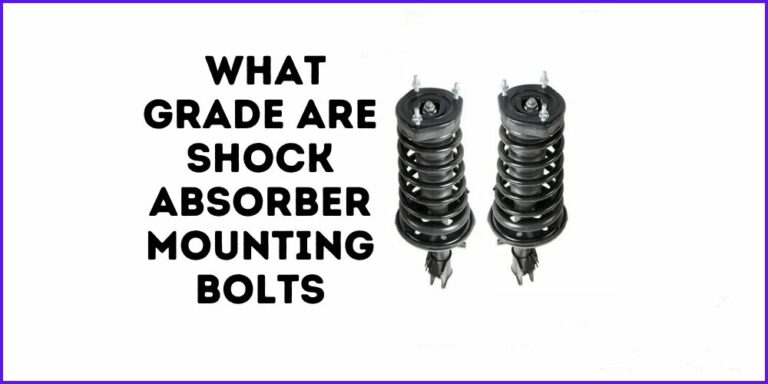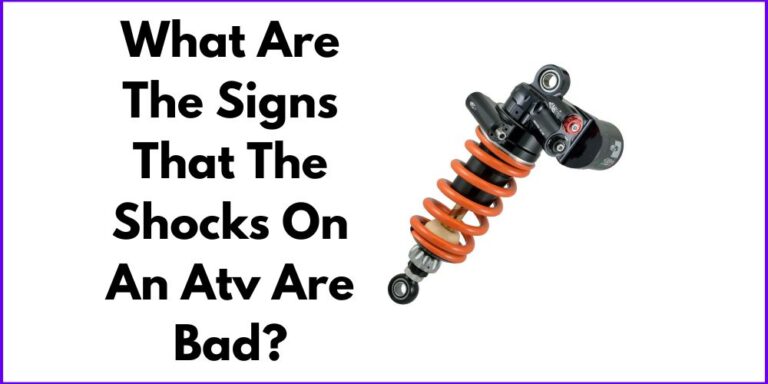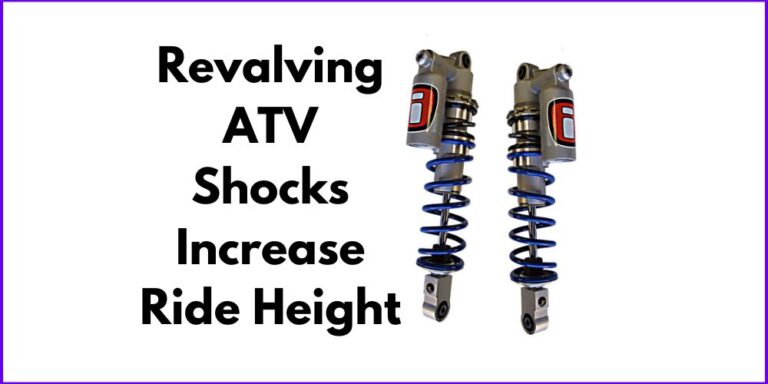Shock absorbers are an integral part of a car’s suspension system, ensuring a smooth and comfortable ride. Damping, which controls the oscillations and vibrations caused by road irregularities, plays a vital role in shock absorbers. However, there is a question that lingers: Are car shock absorbers overdamped or critically damping? In this blog post, we will explore the importance of shock absorbers, and the role of damping, and investigate whether car shock absorbers lean towards overdamping or critical damping. Let’s uncover the secrets behind car shock absorbers and their damping characteristics.
Are Car Shock Absorbers Overdamped Or Critically Damping?
Damping is a critical factor in the performance of shock absorbers, as it regulates suspension movement and energy dissipation.
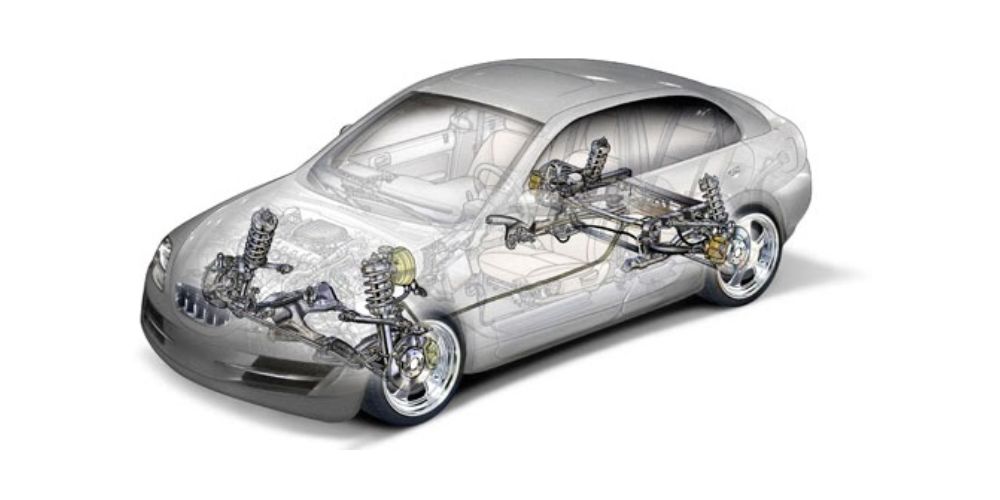
There are various types of damping systems, including Magnetorheological Damper, Monotube Damper, Internal-Bypass Damper, Twin-Tube Damper, Electronically Controlled Damper, and Spool-Valve Damper as listed on Car-and-Driver.
Underdamping results in a bouncy ride, while overdamping leads to stiffness. However, critically damping strikes the perfect balance for a comfortable and controlled ride. The type of damping directly impacts ride quality, handling, and stability, making it an essential consideration for achieving optimal shock absorber performance.
Overdamping in Car Shock Absorbers:
Overdamping occurs when shock absorbers restrict suspension movement excessively, resulting in a stiff and harsh ride.
While it provides enhanced stability and control, it compromises ride comfort and may transmit excessive vibrations and shocks.
Overdamping can be preferred in performance-oriented sports cars or off-road vehicles to prioritize handling and tire contact with rough terrains.
Critically Damping in Car Shock Absorbers:
Critically damping strikes a balance between underdamping and overdamping, offering a comfortable and controlled ride.
It effectively absorbs shocks and vibrations without being too harsh or bouncy, providing optimal ride comfort and improved stability.
Critically damped shock absorbers are commonly found in luxury vehicles and daily commuters where a smooth and pleasant ride is a priority.
Comparison of Overdamping and Critically Damping
When it comes to shock absorbers, two distinct damping characteristics stand out: overdamping and critically damping.
While both approaches aim to control suspension movement and provide a comfortable ride, there are key differences in their performance and implications for car manufacturers and engineers.
Let’s delve into the comparison between overdamping and critically damping, considering their impact on ride comfort, handling, and safety.
Performance Differences:
1. Overdamping: Overdamping restricts suspension movement excessively, resulting in a stiffer ride. This damping approach prioritizes stability and control, making it suitable for situations where precise handling and minimal body roll are essential. However, overdamping can compromise ride comfort, as it transmits more vibrations and bumps to the vehicle’s occupants.
2. Critically Damping: Critically damping strikes a balance between control and comfort. It provides sufficient resistance to suspension movement to maintain stability, while also allowing for adequate absorption of road irregularities. Critically damped shock absorbers optimize ride quality, offering a smoother and more comfortable driving experience.
Considerations for Car Manufacturers and Engineers:
1. Application: The choice between overdamping and critically damping depends on the intended application of the vehicle. If it’s a high-performance sports car or a vehicle designed for aggressive driving, overdamping may be preferred to prioritize precise handling and responsiveness. On the other hand, for passenger cars and vehicles focused on comfort, critically damping is usually the preferred option.
2. Road Conditions: The choice of damping characteristics also depends on the typical road conditions the vehicle will encounter. If the roads are consistently smooth and well-maintained, overdamping may not be as detrimental to ride comfort. However, on rough or uneven roads, critically damping is more suitable to ensure a comfortable ride and better absorption of road imperfections.
Impact on Ride Comfort, Handling, and Safety:
1. Ride Comfort: Critically damping provides a smoother ride experience by effectively absorbing and dissipating energy from road irregularities. It minimizes vibrations and bumps transmitted to the vehicle’s occupants, enhancing overall comfort. Overdamping, on the other hand, sacrifices some comfort for improved stability and control.
2. Handling: Overdamping offers a stiffer suspension, reducing body roll and enhancing handling characteristics, especially during aggressive maneuvers. It provides a more precise and responsive driving experience. However, critically damping strikes a balance that allows for adequate body roll control while maintaining a comfortable ride, making it a suitable choice for most passenger vehicles.
3. Safety: Both overdamping and critically damping can contribute to safety, but in different ways. Overdamping improves stability and control, which can be advantageous in high-speed or emergency situations. Critically damping, with its focus on comfort and ride quality, ensures better tire contact with the road, reducing the risk of loss of traction and improving overall safety.
However, the choice between overdamping and critically damping depends on the intended application, road conditions, and desired trade-offs between comfort, handling, and safety.
Car manufacturers and engineers carefully consider these factors to select the appropriate damping characteristics that align with their specific vehicle goals. Ultimately, finding the right balance between control and comfort is key to providing an optimal driving experience for the end users.
Final Thoughts
Overall, the choice between overdamping and critically damping in car shock absorbers depends on various factors such as the intended application, road conditions, and desired trade-offs between comfort, handling, and safety.
While overdamping prioritizes stability and control, it may sacrifice ride comfort. On the other hand, critically damping strikes a balance between control and comfort, providing a smoother ride experience.
There is no definitive answer as to whether car shock absorbers are typically overdamped or critically damped, as it varies based on the specific vehicle and its requirements.

